Guide to Go to Market Slides: Strategies for 2025 Success


2025 is set to be a breakthrough year for B2B SaaS, where go to market slides can make or break a company’s growth story. Even the most innovative products face a common roadblock—turning bright ideas into scalable revenue without a unified GTM approach.
This guide unpacks exactly how to build high-impact go to market slides that align product, marketing, and sales teams for measurable business outcomes. We’ll explore GTM slide fundamentals, actionable step-by-step strategies, the game-changing role of AI and Agentic Automation, common pitfalls, and real-world examples from SaaS leaders.
Ready to transform your GTM execution and position your startup for 2025 success? Dive in and discover what it takes to win.
Understanding Go-to-Market Slides: Purpose and Impact
Go to market slides are the heartbeat of any B2B SaaS pitch deck or board presentation. These slides distill a company’s entire growth strategy into a single, compelling visual that aligns product, marketing, and sales. For SaaS founders, the ability to communicate a unified GTM vision is critical—especially as 2025 brings new pressures for clarity and execution.
A well-crafted go to market slide serves as a north star for the entire organization. Investors and executive teams rely on these slides to determine funding priorities and resource allocation. In fact, industry surveys reveal that 70% of failed SaaS launches point to poor GTM alignment as a core reason for underperformance.
What separates effective go to market slides from forgettable ones? Consider these comparisons:
- Effective: Airbnb’s slide mapped clear channels, partners, and measurable milestones.
- Ineffective: Generic templates that lack customer focus, specific channels, or actionable KPIs.
- Effective: Visuals that highlight unique value, market positioning, and a phased channel plan.
- Ineffective: Overloaded slides with jargon, cluttered design, or missing KPIs.
For more real-world analysis, see Go-to-market strategy slide insights.
In 2025, expectations are higher than ever. Investors want go to market slides that are data-driven, visually clear, and built for ongoing strategy reviews—not just initial fundraising. Slides now communicate competitive edge, channel mix, and the impact of innovations like Agentic AI, setting the stage for measurable growth.

Essential Elements of a High-Performing GTM Slide
Building powerful go to market slides is about more than just good design. The best slides combine strategy, storytelling, and data to align teams and win buy-in from executives and investors.

Key Components to Include
Every high-performing go to market slide should cover these core elements:
- Target Customer Personas: Clearly define segments, such as enterprise IT, and map their journey.
- Marketing and Sales Channels: Outline digital, partner, direct, and ecosystem strategies, using Agentic AI to predict which channels will drive ROI.
- Value Proposition and Messaging: Articulate what sets your solution apart, like enterprise-grade security or rapid deployment.
- Revenue Model: Specify if you are B2B, B2C, or hybrid, and show clear monetization paths.
- Timeline and Milestones: Visualize phases from launch to expansion, using timelines or milestone graphics.
- Competitive Advantage: Highlight your edge in a crowded SaaS market, such as AI-powered automation.
- KPIs and Success Metrics: Show pipeline targets, ARR goals, and conversion rates.
- Visual Elements: Use infographics, channel maps, and charts for clarity and impact.
For more practical tips on structuring and presenting go to market slides, see Go-to-market strategy PowerPoint tips.
Common Mistakes to Avoid
Even the most innovative SaaS startups can stumble if they overlook these pitfalls:
- Information Overload: Packing in too much or too little detail confuses your audience.
- Scattered Focus: Targeting too many segments or channels at once dilutes impact.
- Siloed Activities: Failing to link product, marketing, and sales creates misalignment.
- Vague or Missing KPIs: Without measurable outcomes, you cannot track GTM success.
- Ignoring Change: Customer needs and positioning shift over time, so slides must evolve.
- Poor Design: Cluttered visuals, tiny fonts, or generic templates undermine credibility.
- Lack of Phased Approach: Attempting D2C and B2B simultaneously without a clear plan often leads to failure.
Effective go to market slides avoid these traps, instead telling a focused, data-driven story that drives alignment and results.
Step-by-Step Guide: Building Your 2025 Go-to-Market Slide
Building go to market slides for 2025 requires more than just filling in a template. It is a strategic process that aligns product, marketing, and sales into a single growth engine, powered by data and Agentic AI. Let us break down each step with actionable insights and real-world context.
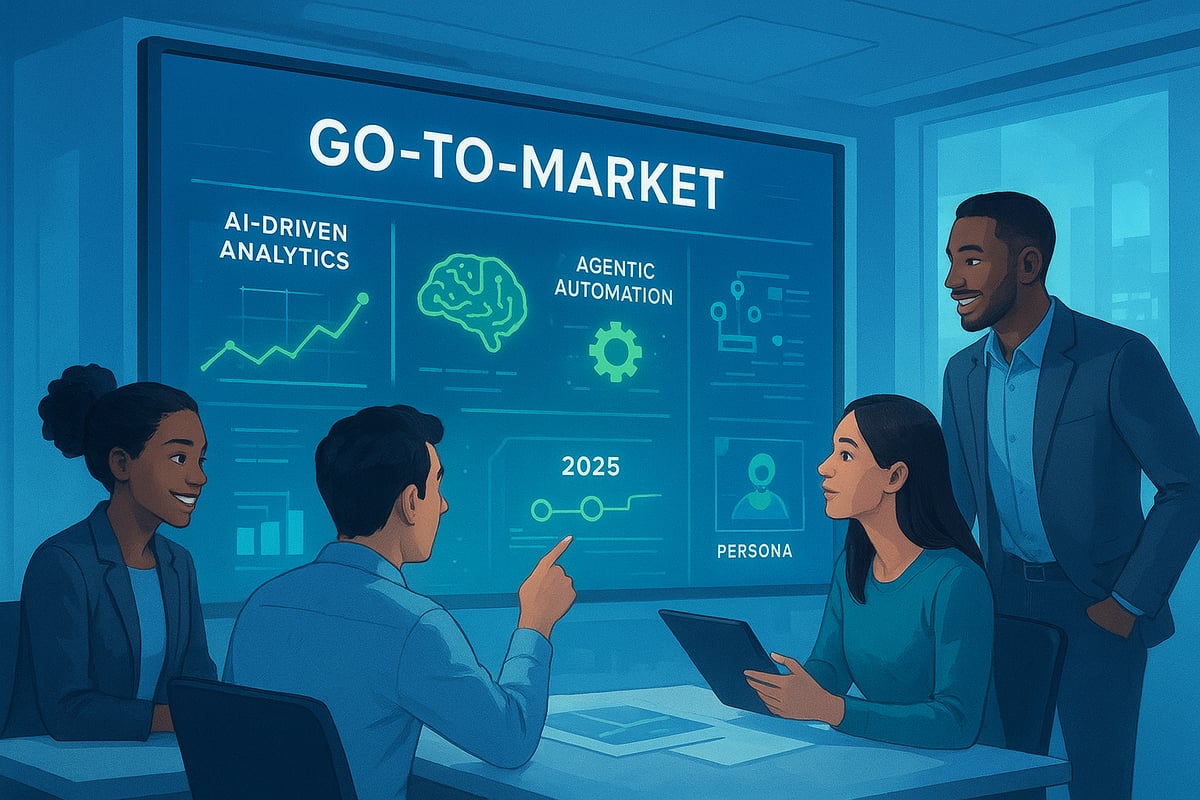
Step 1: Define and Validate Target Personas
Start by researching and segmenting your audience with precision. Use market surveys, interviews, and advanced AI analytics to map pain points, motivations, and buying triggers.
- Example: An enterprise SaaS company builds personas for CIOs, CTOs, and procurement, each with unique needs.
- Agentic AI can synthesize customer data at scale, revealing emerging buyer trends quickly.
These insights form the backbone of your go to market slides, ensuring every strategy is customer-centric.
Step 2: Select and Prioritize Channels
Evaluate all channels—digital, partner, outbound, and events—for reach and ROI. Leverage Agentic AI to model which channels convert best for your Ideal Customer Profile, and automate outreach for efficiency.
- Prioritize based on resource allocation and strategic fit.
- Use scenario planning to test combinations before launch.
For a practical structure, consider using a GTM plan template for SaaS to visualize your channel mix directly in your go to market slides.
Step 3: Craft Compelling Messaging and Value Proposition
Align your messaging with the core pain points of each persona and current trends like AI/Agentic Automation. Stand out from competitors by clearly articulating what makes your solution unique.
- Example: Highlight enterprise-grade security or one-click deployment as differentiators.
- Use concise statements and visuals to make messages memorable.
Go to market slides should make the value proposition instantly obvious to all stakeholders.
Step 4: Establish Metrics, Timelines, and Milestones
Set measurable targets for each phase—pipeline growth, ARR, and conversion rates. Build a timeline that maps launch, scale, and optimization stages, with clear milestones.
- Visualize key metrics: first 100 customers, ARR targets, channel expansion.
- Use data dashboards and infographics for clarity.
This approach adds credibility to your go to market slides and sets the stage for ongoing strategy reviews.
Step 5: Design for Clarity and Executive Impact
Design matters. Use high-contrast visuals, concise bullet points, and data visualizations to tell a compelling story. Every go to market slide should answer: What problem are we solving? How will we win? What are the next steps?
- Test your slides with cross-functional teams for clarity.
- Iterate based on feedback to ensure alignment from product, marketing, and sales.
A well-crafted slide is not just a document, but a catalyst for alignment and growth.
The Role of AI and Agentic Automation in GTM Strategy
Artificial intelligence, especially Agentic AI, is reshaping how companies build go to market slides and execute GTM strategies in 2025. Agentic Automation refers to AI systems that autonomously analyze data, make decisions, and optimize processes, giving SaaS leaders a powerful toolset to align product, marketing, and sales.
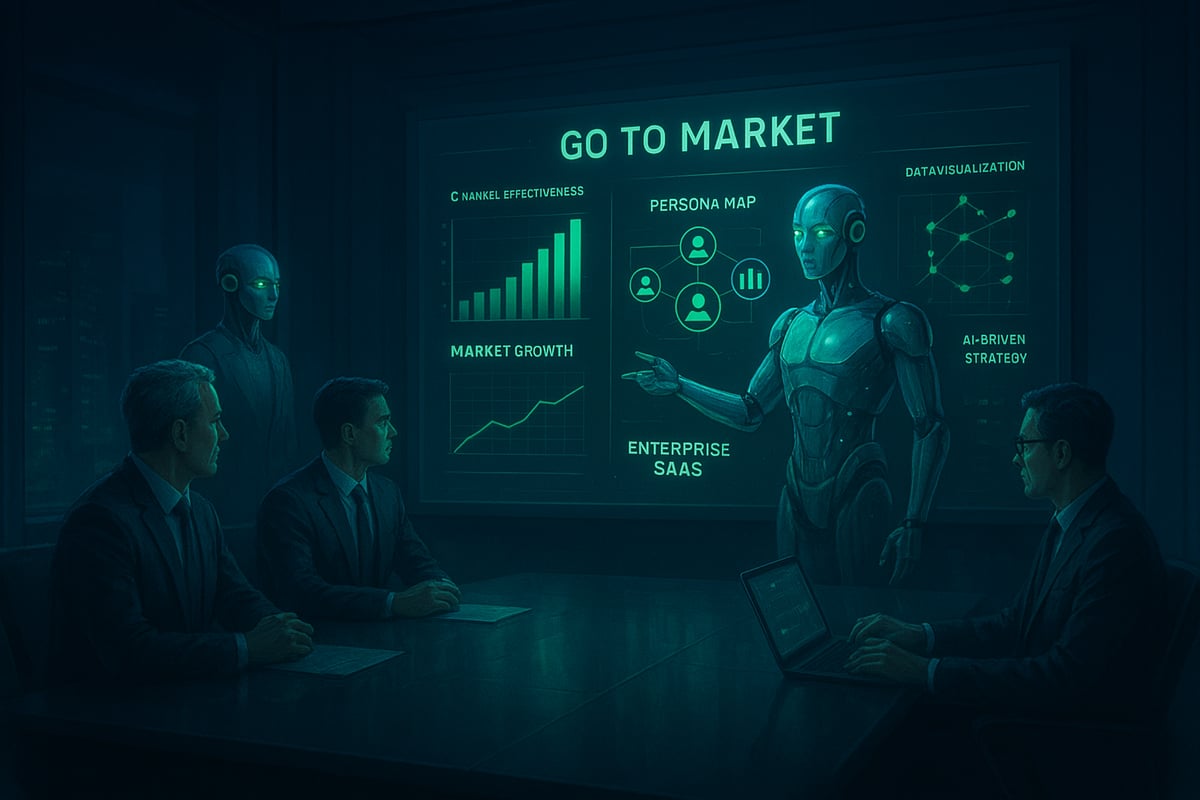
Agentic Automation transforms GTM execution by:
- Rapidly analyzing buyer personas, surfacing pain points, and mapping journeys with AI-driven insights.
- Automating lead scoring and channel selection, adapting in real time for optimal pipeline growth.
- Powering predictive analytics and campaign automation, enabling teams to focus on high-impact activities.
According to The State of Go-to-Market in 2025, companies using AI in their go to market slides report pipeline growth rates 30% faster than their peers. SaaS firms leverage these capabilities for hyper-personalized outreach, dynamic channel allocation, and data-rich GTM reviews.
However, over-reliance on automation can create blind spots. To avoid this, always combine Agentic AI recommendations with human oversight, and clearly visualize AI-driven processes on go to market slides. Consider using infographics, persona maps, and annotated timelines to highlight where AI adds measurable value.
Real-World Examples: GTM Slides from Leading SaaS Companies
Studying real-world go to market slides reveals what sets top SaaS brands apart in 2025. These slides are more than visuals; they are blueprints for alignment, growth, and investor confidence.
Algolia stands out for its razor-sharp distribution focus. Their go to market slides map out segmented ICPs, channel partners, and a phased expansion timeline. By integrating Agentic AI for channel optimization, Algolia tracks ARR milestones and pipeline velocity in real time. Their use of persona-driven messaging and dynamic infographics is a masterclass in clarity.
Bunch successfully transitioned from B2C to B2B by evolving its go to market slides. They showcased a clear move from broad consumer segments to enterprise buyers, leveraging Agentic AI for hyper-personalized outreach. Bunch’s slide visuals highlighted a phased channel rollout and measurable KPIs, making their ARR growth strategy instantly credible.
Airbnb broke through with partnership-driven and event-based GTM slides. Their approach combined ecosystem alliances and local events for rapid market entry. Airbnb’s slides emphasized visual timelines and channel maps, aligning product, marketing, and sales into a single growth engine. However, many startups stumble here by neglecting channel focus or data-driven KPIs. For a deeper dive into common pitfalls, review Why go-to-market strategies fail.
Best Practices for 2025 GTM Slides:
| Company | Segmentation | Channel Strategy | AI Integration | KPIs/ARR Focus | Visual Cues |
|---|---|---|---|---|---|
| Algolia | Enterprise | Phased partners | Yes | Yes | Infographics |
| Bunch | B2C to B2B | Phased rollout | Yes | Yes | Timelines |
| Airbnb | Local/global | Partnerships | Emerging | Yes | Channel maps |
For 2025, benchmark your go to market slides against these leaders. Integrate AI, focus on clear KPIs, and ensure every slide aligns your teams for measurable outcomes.
Aligning Product, Marketing, and Sales for GTM Success
Achieving enterprise-grade growth in B2B SaaS hinges on aligning product, marketing, and sales into a unified force. Without this alignment, even the most innovative go to market slides fall short, causing missed opportunities and stagnant pipeline growth.
Cross-functional alignment begins with shared KPIs and operational dashboards that track pipeline, ARR, and customer success. When teams work from a single source of truth, decision-making speeds up and everyone rallies around measurable outcomes. Companies like Broadcom and xtype.io have seen pipeline growth of 25 to 60 percent by using this approach, proving that alignment is a growth multiplier.
A proven framework includes:
- Enablement playbooks that clarify roles, messaging, and execution steps.
- Regular GTM reviews to adapt strategy as markets shift.
- Integrated planning sessions that bring product, marketing, and sales together.
- Real-time performance monitoring to quickly spot and resolve bottlenecks.
Siloed teams, disconnected KPIs, and weak feedback loops are common barriers. Overcoming these requires commitment to transparency and continuous communication. Leveraging Agentic AI for shared dashboards and predictive insights can further drive alignment, making go to market slides more actionable and credible.
For a comprehensive look at frameworks and real-world best practices, see GTM Marketing in 2025: The Definitive Playbook to Build, Optimize, and Scale Your Go-to-Market Strategy. Ultimately, alignment not only boosts investor confidence but also sets the stage for scalable, repeatable growth.
After seeing how the best SaaS teams bring their GTM slides to life—combining sharp focus, data-driven alignment, and a dash of AI magic—you might be wondering what your next move should be. I’ve watched founders transform confusion into clarity, and those moments always start with a real conversation. If you’re ready to turn your product story into a growth engine, why not take the first step? Let’s connect and talk through your challenges, your vision, and how you can build slides that actually move the needle for 2025. Book Your Personal Intro Call

Latest From
The Blog
Go To Market Strategy Consulting Guide For 2025 Success

Go To Market Strategy McKinsey Guide For Success 2025

Crossing the Enterprise Chasm: A Practical Guide to Sales-Led Growth (SLG)


Let's Build The Future Together




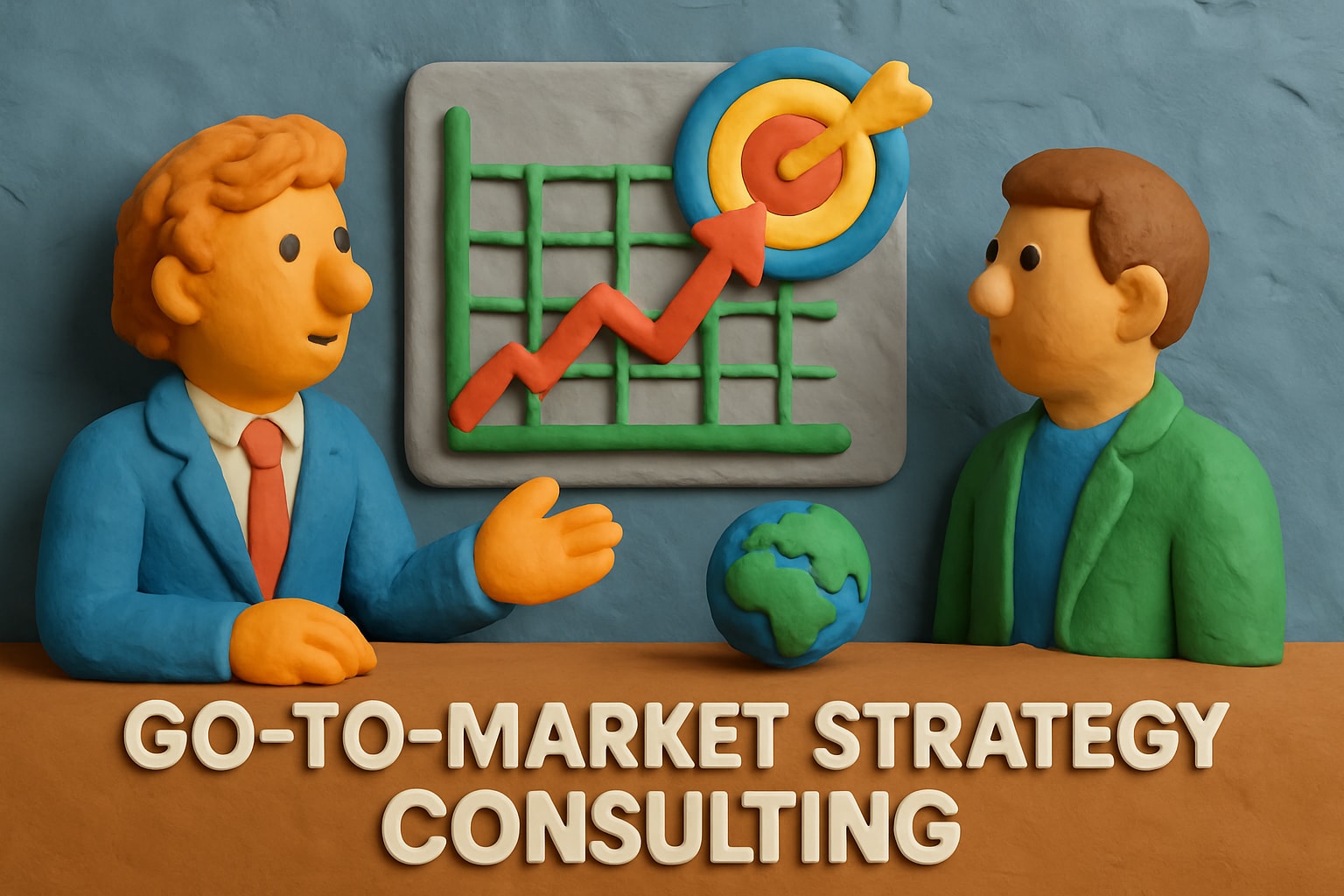
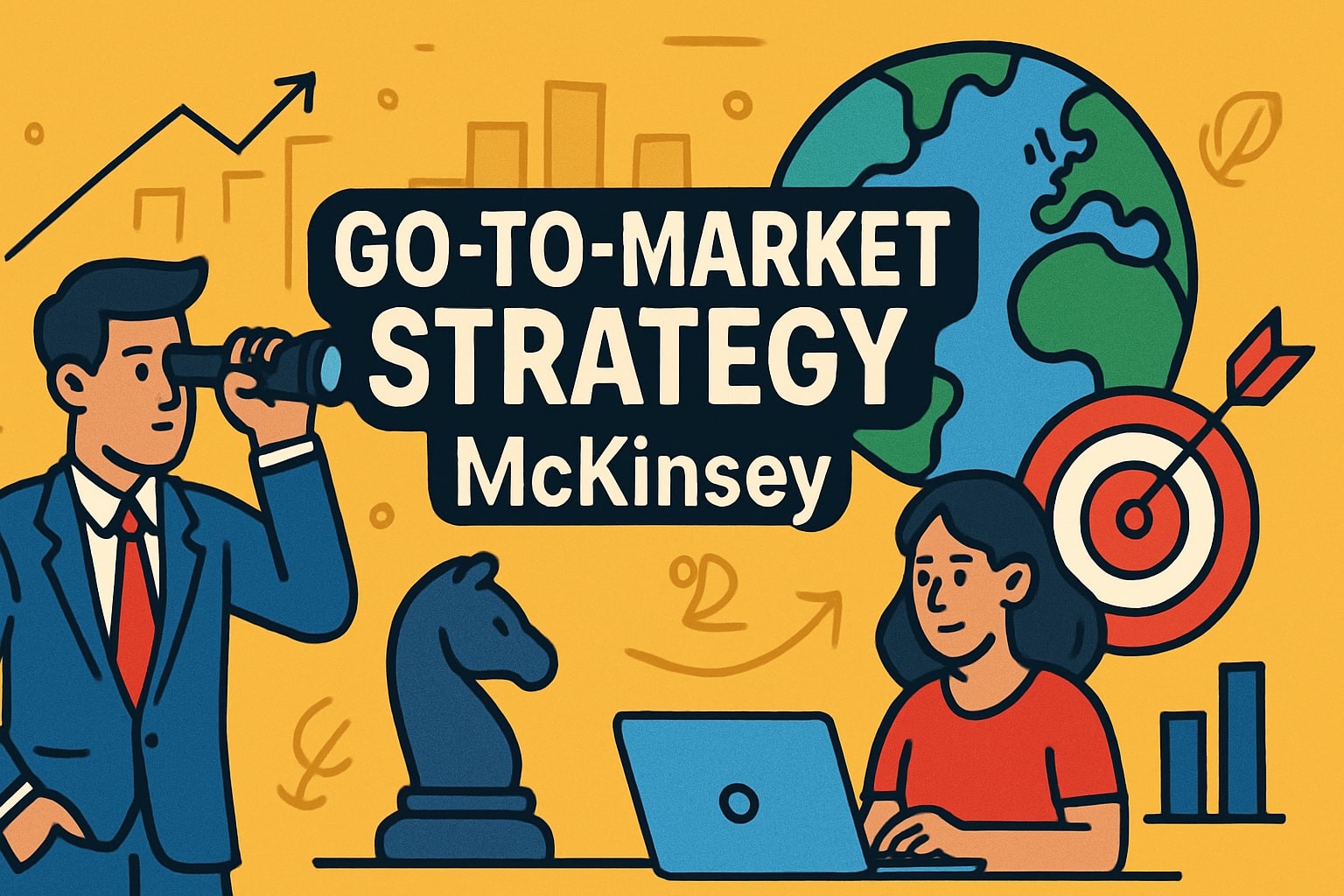
.jpg)